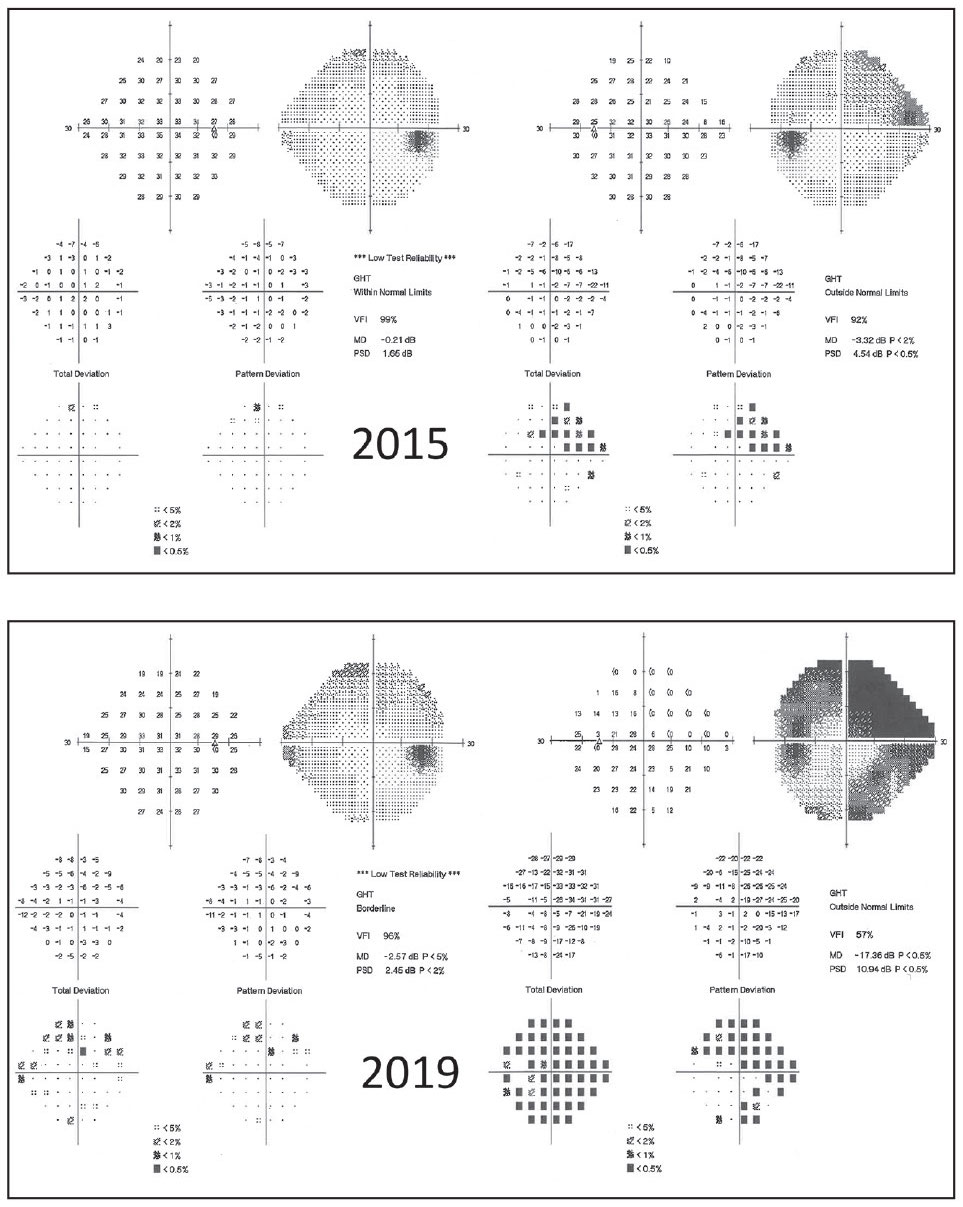 |
| TMTD analysis incorporates similarities from other trend analyses of pointwise linear regression and cluster trend analysis by clustering the VF into hemifields and estimating regional VF rate of change after excluding scotoma locations. Photo: Andrew Mackner, OD. Click image to enlarge. |
Detection of visual field (VF) progression in patients has traditionally been diagnosed and managed through standard automated perimetry. Recently, many novel approaches have been proposed to detect VF progression, one of which was tested in a study appearing in Eye. The study researchers evaluated clinical use of trend-based analysis of the targeted mean total deviation (TMTD), comparing VF change rates and sensitivities of detecting VF progression with those of the mean total deviation (mTD) in the global and hemifield VF area. This was conducted on patients with early to moderate glaucoma.
TMTD is a newer VF index introduced, defined as the average of the total deviation (TD) values after excluding scotoma points that are consistently undetectable in established glaucoma patients. In this study, one eye of each 139 open-angle glaucoma patients with hemifield VF defects was retrospectively evaluated with two years of follow-up.
What was found were 49 VF progressors and 90 non-progressors. Both global and VF-affected hemifield TMTD slopes were faster than those for the mTD in each subgroup as well as the entire study group. Trend-based analysis of TMTD saw a greater VF progression than trend-based mTD or event-based analysis. Upon subgroup analysis, TMTD slopes displayed faster FV reduction rates than mTD slopes in the global area and VF-affected hemifields in eyes with or without VF progression.
Consequently, the authors pose that “present findings thus indicate that serial assessments of changes in the TMTD may be a valuable approach to accurately evaluate VF changes by removing the effects of scotoma locations within the hemifields of VF loss, even in early to moderate stage open-angle glaucoma patients presenting with hemifield VF defects.”
The importance of the statistically significant global TMTD and mTF slopes lies within its remaining significance between progressor and non-progressor subgroups, as well as when VF progression was defined by event-based or trend-based mTD analyses. Both of these observations suggest mTD slopes underestimate global VF rates of loss and that TMTD slopes more accurately estimate these values, offsetting underestimation effects of consistently undetected VF locations.
The authors also elaborate on the more negative TMTD slopes seen in VF-affected hemifields than in global VF areas in each subgroup and the entire cohort. This particular finding indicates that regional TMTD slope analysis in VF-affected hemifields may yield better results in identifying progressive VF loss in its steeper slopes when compared to the global TMTD slope analysis.
Greater sensitivity may be another reason why TMTD slopes more effectively detected progressive VF changes, when compared with event-based or trend-based mTD analyses. TMTD analysis yielded a greater number of VF progressors than the other two analyses.
The authors relate their findings to potential clinical application. “The future development of novel VF software incorporating the concept of the TMTD may offer a more accurate and practical approach to estimate the rates of global and regional VF changes, even in early-to-moderate stage glaucoma,” they posit.
Song WK, Kim KE, Lee A, Yoon J, Kook MS. Utility of targeted mean total deviation trend analysis for detecting progressive visual field changes in early-to-moderate stage glaucoma. Eye. September 1,, 2023. [Epub ahead of print]. |

